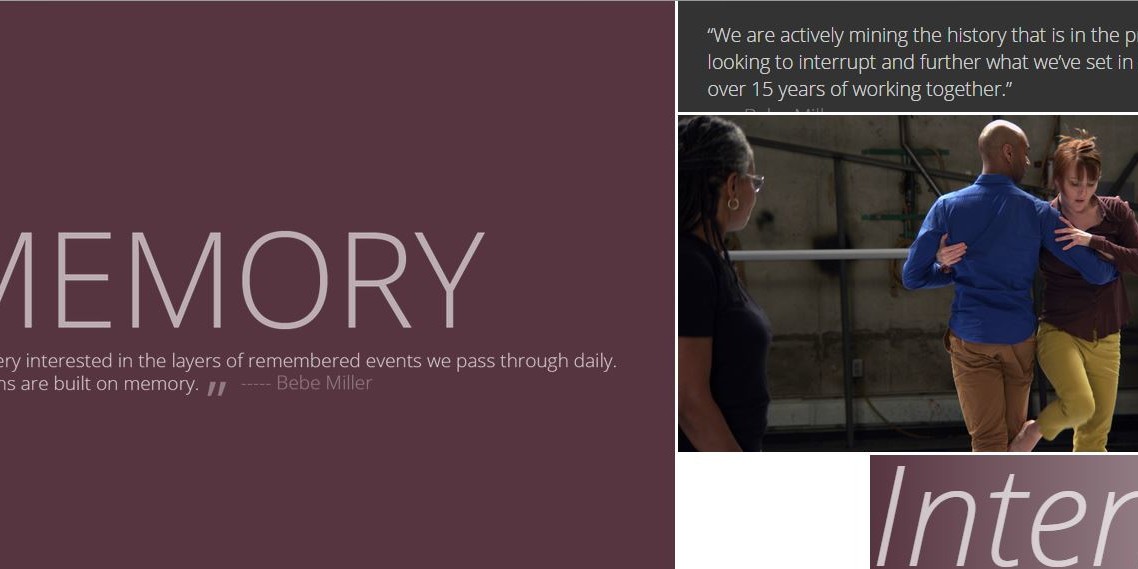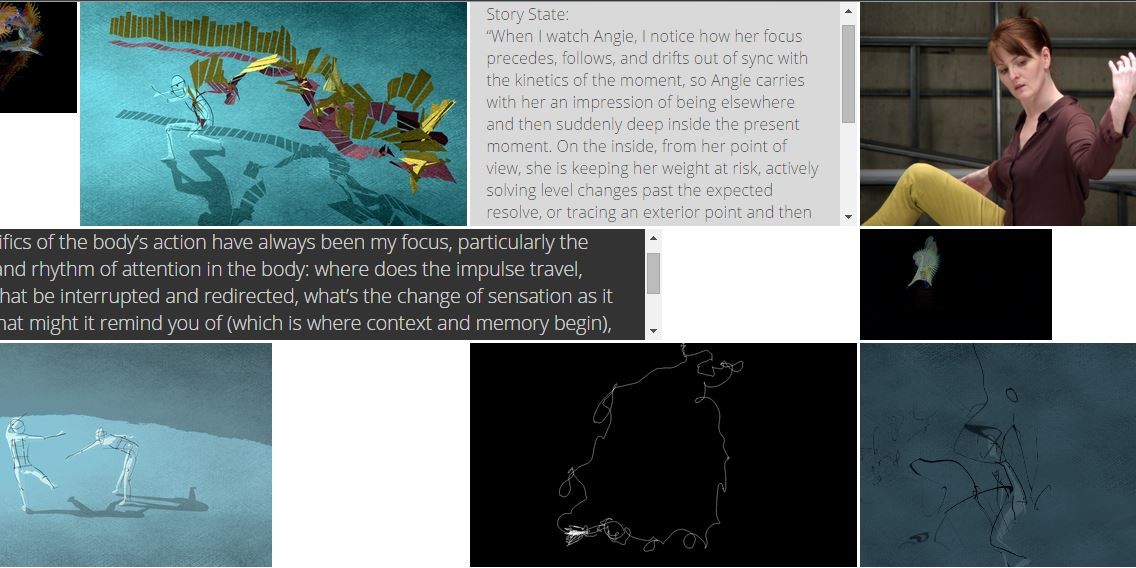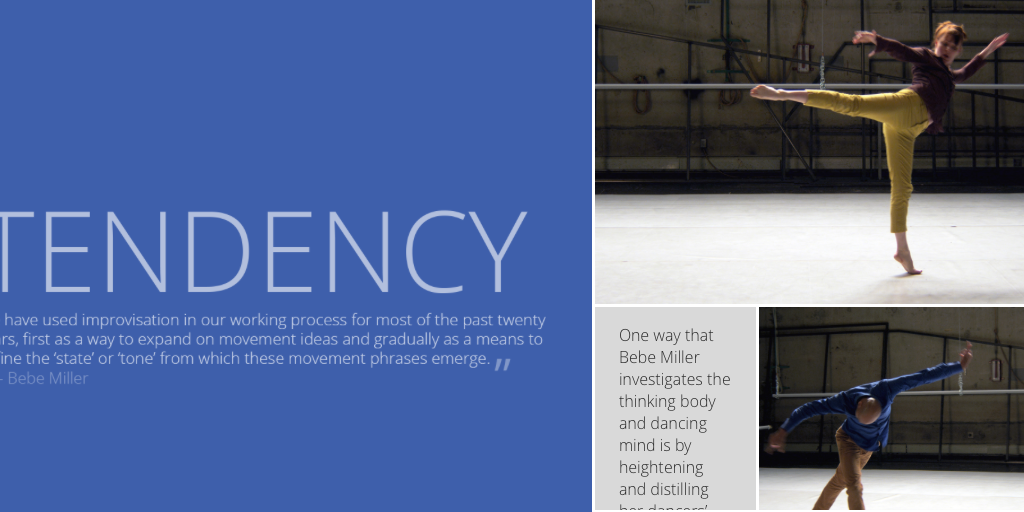“We are actively mining the history that is in the present,
looking to interrupt and further what we’ve set in motion over 15 years of working together.”
-Bebe Miller
The TWO Project
Both Thomas Hauert and Bebe Miller are currently choreographing improvisation for performance and are engaging directly with the nature of human consciousness. When we watch them and their dancers, we are watching them at work. We are witness to the concentration and forms of attention that they bring to the moment and to how they work with their habits, tendencies, impulses, and memories in action.
Motion Bank, is a project of The Forsythe Company providing a broad context for research into choreographic practice. The main focus is on the creation of on-line digital scores in collaboration with guest choreographers to be made publicly available via the Motion Bank website.
The results were launched publicly as part of a suite of score projects for the Motion Bank initiative of The Forsythe Company on November 28, 2013. They are available here: http://scores.motionbank.org/two/#/set/sets

TWO is a collaboration for Motion Bank by Maria Palazzi (ACCAD/Design) and Norah Zuniga Shaw (ACCAD/Dance) at The Ohio State University.
-Text from “About” in OSU TWO project blog by Norah Zuniga-Shaw
“We are calling on and opening up to things firing in deep embodied memory. We say yes to imagining the physical manifestation. Memory is always a fiction, the more we do it the more we remember the remembering” -Angie Hauser
Thoughts on the working process to create performance improvisation with the Company and what it means (further excerpted in TWO Project)
by Bebe Miller
We have used improvisation in our working process for most of the past twenty years, first as a way to expand on phrase-making (setting the kinetic phrases that are ‘thrown’ and ‘caught’ by me and the dancers) and gradually as a means to define the ‘state’ or ‘tone’ from which these phrases emerge. This evolutionary process has as much to do with the realities of who is in the room and what skill set they’re invested in (phrase-builders, improvisers, something between) as with my own changing perspective as a mover and a director. When I stepped out of the work as a performer in the 1990’s I became my own proscenium, in a way; my language changed, I described what was happening (or could happen) in front of me, differently than what I felt around me as a dancer. I found myself describing the weather of the material: the pull of attention, the sweep of action, the arrested moment, the pressure between people. The details shifted from the articulated body to the articulated space to the articulated tone of the space. The specifics of the body’s action have always been my focus, particularly the dynamic and rhythm (time) of attention in the body: where does the impulse travel, how can that be interrupted and redirected, what’s the change of sensation and tensile involvement as it travels, what might it remind you of (which is where context begins), who is doing it to/with who, can one kind of action be sustained in the presence of ______. It’s the thrust of the intended that puts an arm into space just so, rather than it’s placement there. So it’s the felt sense of the arrangement of parts/sequences of action that is choreographic in the body, and between bodies.
I am very interested in the layers of remembered events we pass through daily; humans are built on memory. There is an aspect of improvisation that asks you to shuffle through the various layers of RIGHT NOW, DO THIS, in order to respond directly to the situation. This seems apparent in a range of abstraction, or it seems available if you’re attentive to the possibility. We as a company have invested in researching this relationship between memory and body/mind/place/time. Angie [Hauser] and Darrell [Jones] have the immediacy of their 15-year history as dance partners, along with their inescapable interior landscapes; Talvin [Wilks] and I have a 15-year history of watching them meet the various situations we’ve built, along with our own agendas, that we bring to the table. It seems we’re actively mining the present, looking to interrupt and/or further what we’ve set in motion over our work together. I think this means that we’ve recognized that the power of the choreographed moment has much to do with the live intentions that are set on various vectors, and how we (and an audience) might respond to that reality. This feels potent as a theatrical strategy. Arriving at the level of exquisite detail in repeated actions – set material – carries some of the same satisfaction; it calls for a different set of resources.






